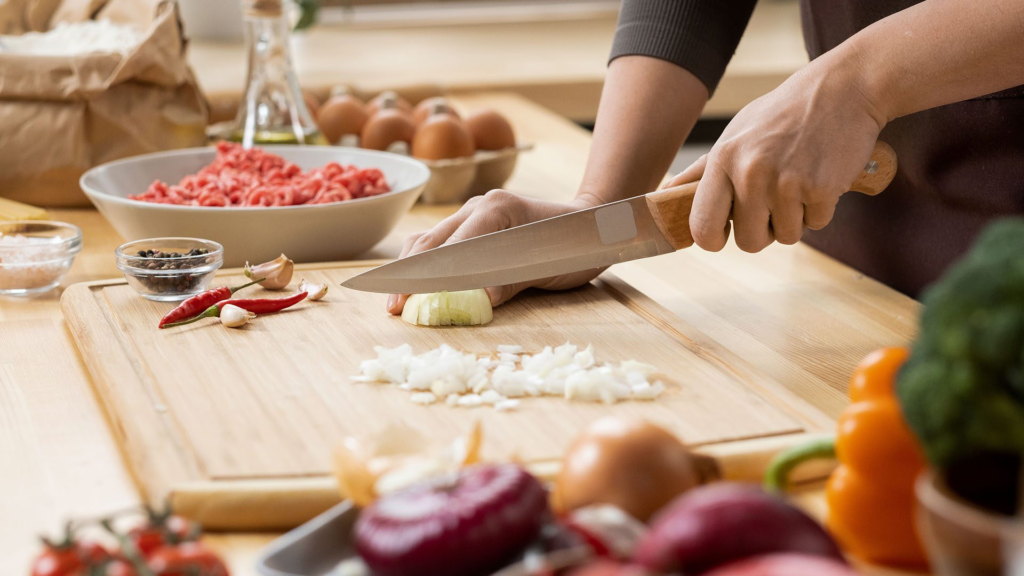Sustainability is no longer just a choice; it’s a responsibility. As food plays a significant role in shaping our ecological footprint, embracing sustainable Indian cooking practices can help reduce environmental impact. Indian cuisine, known for its diversity and rich flavors, lends itself beautifully to sustainable cooking techniques. Let’s explore how we can cook delicious Indian meals while respecting the planet.
Why Sustainable Cooking Matters
Sustainable cooking is about making choices that minimize waste, save energy, and utilize locally available resources. It reduces the carbon footprint of your kitchen and supports a healthier lifestyle. Indian recipes are inherently sustainable, as they often rely on plant-based ingredients, seasonal produce, and minimal processing, aligning with eco-friendly principles.

Eco-Friendly Tips for Sustainable Indian Cooking
Choose Local and Seasonal Ingredients
Indian markets are abundant with fresh, locally grown vegetables, fruits, and herbs. Incorporating these into your meals reduces the energy used in transportation and storage. For instance, preparing dishes like Aloo Mutter or Nilgiri Saag Paneer with in-season produce ensures freshness and nutrition while supporting local farmers.
Minimize Food Waste
Indian cooking creatively uses food scraps. For example, vegetable peels can be transformed into broths, while leftover rice can become flavorful fried rice. Composting kitchen scraps is another excellent way to handle waste sustainably.
Opt for Plant-Based Proteins
Plant-based diets are more sustainable than meat-heavy ones. Traditional Indian dishes like Soya Chaap Masala or Paneer Balti are excellent sources of protein and taste. Substituting meat with lentils, chickpeas, and tofu reduces your ecological footprint significantly.
Use Energy-Efficient Cooking Methods
Pressure cooking and slow cooking are staples in Indian kitchens. They not only save time but also conserve energy. Dishes like Darbari Dal Makhani can be cooked using a pressure cooker, reducing both fuel usage and preparation time.
Reduce Single-Use Plastics
When shopping for ingredients, carry reusable cloth bags. Storing spices and pulses in glass jars or steel containers keeps your kitchen organized and reduces reliance on plastic packaging.

Sustainable Indian Recipes to Try
Aloo Mutter (Potato and Peas Curry)
This simple dish combines locally sourced potatoes and peas, making it a perfect sustainable recipe. Its rich tomato-based gravy is easy to prepare and pairs well with rotis or rice.
Vegetable Samosas with Leftover Veggies
Utilize leftover vegetables to make samosas, a beloved Indian snack. These crispy pastries are an excellent way to avoid food waste while delighting your taste buds.
Soya Kadai Masala
This protein-rich dish uses soya chunks cooked in a medley of spices and onions. It’s hearty, fulfilling, and a wonderful alternative to meat dishes.
Hare Masala ka Bhuna Paneer
Paneer cooked with fresh green masala (herbs and spices) is both nutritious and eco-friendly. The recipe uses minimal oil and ingredients, showcasing the simplicity of Indian cuisine.
Sunhari Dal Tadka (Golden Lentils)
Lentils, a staple in Indian cooking, are packed with nutrients. A simple tadka of mustard seeds, curry leaves, and garlic elevates this humble dish into a sustainable feast.

Benefits of Sustainable Indian Cooking
Switching to sustainable practices not only helps the environment but also improves your health. Reducing processed foods and embracing organic, fresh ingredients enhances nutrition. Moreover, eco-friendly cooking can be cost-effective, as it focuses on minimizing waste and reusing ingredients efficiently.
Bringing Sustainability to Every Indian Meal
At Indian Junction, we believe in serving meals that respect both your palate and the planet. Many of our dishes reflect sustainable cooking principles, from plant-based options to innovative takes on traditional recipes. Whether you dine with us or order for delivery, you can savor authentic Indian flavors with the satisfaction of supporting eco-conscious practices.

Conclusion
Sustainable Indian cooking is more than just a trend; it’s a movement towards a greener future. By incorporating eco-friendly practices like reducing waste, using seasonal produce, and cooking plant-based meals, you can make a significant difference. Let’s embrace the rich heritage of Indian cuisine while paving the way for a sustainable tomorrow.
Explore sustainable Indian recipes and tips at Indian Junction, where tradition meets eco-consciousness.



